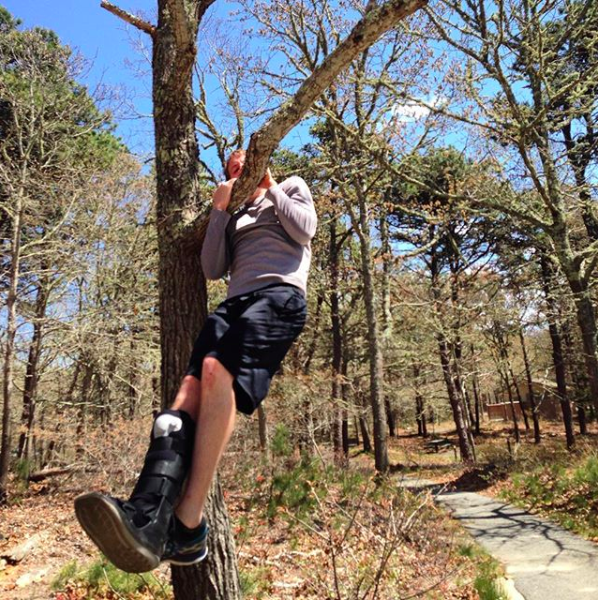Getting fit sounds great in theory, but so does a hot tub full of nachos. Putting in the time and effort to achieve your goal doesn’t always turn out as planned, however. Unfortunately, the Alabama computer engineer’s nacho tub kickstarter campaign raised only $20 of its $4,000 goal.
The truth is, not everyone likes exercise. Even the thought of swimming laps or doing pushups can make you hide under the covers and binge-watch Netflix. As the mid-1900s cartoonist Paul Terry put it, “When I feel like exercising, I just lie down until the feeling goes away.”
So, what can keep you from running away from the dreaded deed of physical activity, figuratively, and prompt you to just start running, literally—or dancing, speeding through chores, playing sports, gardening, hiking, doing yoga, kneading dough, or frolicking with kittens?
Wow, wow, wow. You’re probably thinking that kitty play time doesn’t constitute a workout. In your mind, physical activity takes place in a crowded gym full of heavy weights and Herculean men judging your every move. Wrong. Doing anything active counts. Exercise doesn’t have to be as difficult, time consuming, sweaty, exhausting, or downright miserable as you fear.
Here are a 10 common reasons why people don’t find fitness fun along with tips on how to overcome these obstacles.
- “I don’t need to worry about exercising. I’m not overweight.”
If you’re young and healthy, you may think you’re invincible. But even people who are within a normal weight range should care about the benefits of exercise beyond aesthetics. Everyone can benefit from the perks of regular physical activity, which range from staying sharp as you age to boosting your game in bed. Also, even though you’re thin now, you may still have a high fat percentage, which can lead to many conditions listed in point No. 2. Plus, you may not stay thin forever. Metabolism often slows with age.
- “Being inactive can’t be too bad if nobody else exercises.”
Hopping on the sedentary activity bandwagon is no way to approach your problems. Yes, about three out of every four American adults fail to meet national physical activity recommendations and are overweight or obese. But being part of the majority is nothing to brag about. These conditions can also put you at higher risk for a whole host of chronic diseases that are killing Americans.
Among the many long-term impacts of inactivity are heart disease, type 2 diabetes, certain cancers, anxiety, depression, dementia, brittle bones, and an earlier death, overall. In the short-term, physical activity can help you manage your weight and improve your daily happiness and well-being.
- “Why be healthy? We’re all going to die of heart disease or cancer anyway. I may as well spend life doing what I like.”
Ah, another all-too-common barrier to working out: the futility of life itself. Classic! Well, why do you take a shower each day? You’ll only get dirty again. Why eat? You’ll only be hungry again. Why even breathe air into your lungs if you’ll have to exhale it all later? Am I right?
If you don’t take care of your body because you’re too busy “enjoying life,” your body will betray you. It may become difficult to perform basic daily life tasks when your health starts to deteriorate.
Plus, making progress toward your physical activity goals can be a motivating and rewarding experience. I grew up the slowest, weakest, and least coordinated kid money could buy. Trust me, there’s a huge black market for purchasing such goofballs for entertainment value. I’ve since become a group exercise instructor and personal trainer. Over the years, I’ve achieved various goals that I take pride in, such as going on 13-mile runs just for kicks, running a mile in under 4:40, doing 10 consecutive pull-ups, deadlifting 300 pounds, and being the superhero my mom needs when she can’t lift the cast iron skillet out of the drawer. I’m sure you’ve heard this before, but wellness goals don’t happen overnight—unless your goal is to sleep more.
- “I don’t have time.”
I frequently postpone workouts because I’m under the false impression that I need to spend an hour or more on the endeavor warming up, doing a routine, stretching, showering, and changing. But, simple 10-minute sessions can add up to meaningful results, too. Just a minute of climbing stairs or crunches can help re-energize you. I teach a workout class called BODYPUMP comprised of weightlifting movements choreographed to music. Each song is just 5 minutes, I can do just a song or two at a time if I’m swamped, and still feel the benefits.
I waste tons of time each day on social media, chatting up random telemarketers who convince me I need waterfall insurance, and reading countless articles on how to better prioritize my time. I’m sure you could carve 20 minutes out of your day for physical activity, too.
- “I’m too tired.”
Although exercise can exhaust your muscles, it can also energize your brain and improve your mood. The increased blood flow through the body pumps oxygen into your brain and stimulate the release of “feel-good” endorphins. Working out with a friend can keep you motivated even when you feel like you’re in a funk.
Research on depression and anxiety has demonstrated physical activity can help take your mind off whatever is bogging you down, too. Studies also show that people who regularly exercise sleep better, so you’ll wake up feeling less fatigued.
- “I just hate working out. It sucks and I can’t do it.”
I hear you. There are exercises I can’t stand, either. I’ve tried running on treadmills before but feel like I get nowhere. Tennis has never been my game. My body took a beating when I tried snowboarding. Not all physical activities are created equally, and often negative attitudes stem from a single negative experience. I associate snowboarding with the pain of my forearm falling on ice, for instance.
But, how about trying something new? Try spending a night out dancing this weekend. A Zumba class would work if you’re not free at night. See if you can sign up for an adult league of a sport you enjoyed growing up. Just walking around and exploring a new neighborhood will do the trick, too. How about folding laundry and washing dishes while enjoying your favorite show or podcast. You can build activity into whatever you like to do.
- “Maybe I’ll go to the gym once I’m in shape.”
Hey, guess what you can do at the gym? Ding, ding, ding: get in shape.
But, it’s true. Seeing a bunch of beautiful people at an athletic club may make you feel worse about your body or your lack of knowledge or confidence about fitness. I had the same fear of going to the rec center to play basketball when I wasn’t confident about my game. That’s where having a supportive buddy can make a big difference. If gyms aren’t your thing, you and your partner in wellness can take walks, play squash, try a yoga class, or just explore a museum together. If you’re serious about achieving your fitness goals, personal training is another option to consider.
- “I’d love to work out, actually, but I always get sidetracked and forget.”
Try packing your gym attire in your work backpack and keeping your sneakers in sight throughout the day as a reminder to work out after leaving the office. I keep my bicycle right next to the front door, so I always have the option to build activity into my daily tasks by biking instead of taking public transportation for short-distance trips. Having a hourly reminder on your calendar or FitBit can be the cue you need to get up and move, too.
- “How do I even exercise? I have no clue what I’m doing. I give up.”
When I first entered a gym, I would stare quizzically into the endless sea of complicated machines, slabs of iron plates, and automated treadmills that doubled as evil robots plotting to fling me into the fourth dimension if I touched the wrong button or gave the rowing machine the wrong look. Basically, I had no confidence in what I was doing at gym. I wasn’t even high fiving people in the locker room or saying, “no worries, bro” the right way. When the guy bench pressing next to me asked, “Can you spot me?” I reluctantly, took out my wallet and asked how much he needed.
Eventually, I began taking group exercise classes where experts trained me on how to lift weights properly without hurting myself. Brittaney, Neil, Owen, and the other instructors provided the positive reinforcement I needed to hook me onto this enduring habit. My small goals added up, and I was no longer nervous walking into a gym alone. I became so confident taking these classes and lifting with partners that I got certified to teach my own classes. All it took was knowing I could perform a specific exercise based on past experience. If I can do it, so can you.
Noah Goetzel is a primary group exercise instructor and personal fitness instructor certified through the Athletics and Fitness Association of America (AFAA). His expertise is in high-intensity interval training, cardio and strength training, and metabolic conditioning. He is also a Master of Public Health student studying health promotion research and practice at the Columbia University Mailman School of Public Health.

Please do not hesitate to reach out to the MindReset community.
The MindReset is a community of individuals who seek to inspire a social movement geared toward creating a more Supportive, Inclusive, Compassionate, and Kind society where anyone and everyone has the opportunity to thrive.
- Facebook: https://www.facebook.com/theMindReset/
- Instagram: @The_MindReset
- Twitter: themindreset
- #TheMindReset #TMR #SICK
- e-mail: contact@themindreset.com


